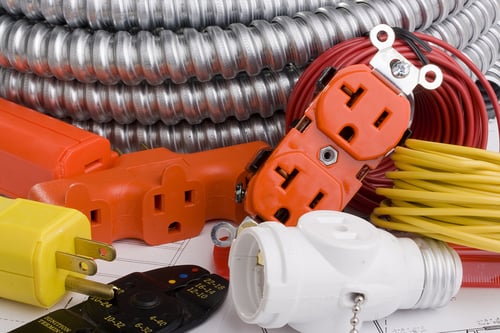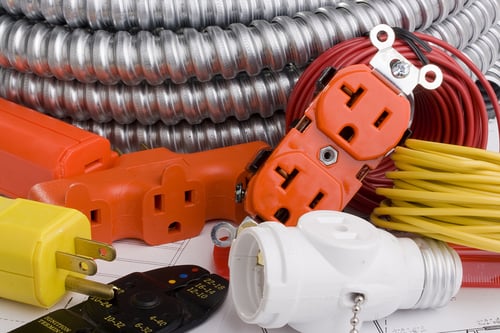The general public is aware that circuit breakers trip when there are electrical faults, preventing equipment damage and fires. However, there are electrical problems that do not produce high magnitude current or immediate damage and tend to go unnoticed for long periods. These less serious electrical problems are not easily noticed, but they shorten the life of the equipment and reduce performance.
Get a code-compliant electrical design for your construction project.
Voltage drop
When electricity moves through a material there is always a voltage drop, which is determined by current (amps) and resistance (ohms). Even though the wiring has low resistance, there is still a voltage drop involved. Therefore, the voltage supplied to a circuit is greater than the voltage received by the loads connected to the circuit.
Electrical devices can typically operate within a voltage range and, as a result, tolerate a small voltage drop. However, excessive voltage drop is detrimental to the performance of many devices and can even cause damage. Severe voltage drop has many possible causes:
-
Improper wiring: Wiring is typically selected based on load current, but long circuits may need a larger capacity to reduce resistance and voltage drop.
-
Low supply voltage: External problems can affect the voltage at the source, reducing the supply voltage of electrical devices, even if the wiring is adequate.
Keep in mind that higher ampacity wiring is also more expensive and electrical engineers do not recommend oversizing for this reason. You should use a wire size that carries the charging current safely while minimizing voltage drop. The National Electrical Code (NEC) recommends a voltage drop of less than 3% for branch circuits and less than 5% for feeder circuits.

Voltage drop can be controlled with professional design by qualified electrical engineers. Based on the loads connected to each circuit, they can specify a wire size that keeps the voltage drop within the range recommended in the NEC.
Overvoltage is the opposite phenomenon, but is much less frequent. Since wiring always causes voltage drop, overvoltage is usually a problem with the power supply or can be caused momentarily by some devices. The main consequences of overvoltage are additional energy consumption and potential damage to equipment.
Voltage imbalance
Three-phase power is commonly used in large commercial and industrial environments. Ideally, electrical charges should be evenly balanced, but in practice a perfect balance is not possible. As a result, there will be variation in voltage and current between conductors in a three-phase system.
Although a low magnitude unbalance is tolerated, some types of equipment are affected when the voltage unbalance increases. Three-phase motors are the most affected, suffering the following consequences:
-
Overheating: While a 2% imbalance causes an 8% increase in temperature, a 5% imbalance leads to a 50% increase in temperature.
-
Poor mechanical performance: A motor with unbalanced voltage cannot provide a constant torque on the shaft and also suffers from increased vibration and noise.
-
Shorter service life: This can be expected when an engine is subject to overheating and vibration. Bearings and winding insulation are usually the first components to become damaged.
Voltage unbalance is impossible to eliminate completely, but it can be mitigated with evenly distributed loads. In cases where loads cannot be balanced effectively, power electronics can be deployed to achieve a balanced voltage.
Harmonics
Harmonics are a complex electrical phenomenon – their description is very technical and their mathematical model is equally complex.
-
When electrical charges have a linear relationship between voltage and current, their currents cancel each other when they meet in the neutral conductor. When only linear loads are present, any current in the neutral conductor is due to phase imbalance alone.
-
On the other hand, nonlinear loads have more complex current signals, which add instead of canceling when they meet in the neutral conductor. These are called harmonic currents.
The main consequence of harmonics is overheating, which can be harmful to both wiring and equipment. Harmonics can also interfere with the performance of different types of equipment, causing more frequent breakdowns and reducing their useful life.
Because nonlinear loads are required for many applications, harmonics require specially designed filtering devices. These filters contain harmonics at the source, preventing their propagation to other loads and circuits.
Conclusion
The electrical conditions described in this article are characterized by the fact that they can remain undetected for long periods, without causing sudden failures, but gradually damaging installations and equipment.
By working with qualified electrical engineers during the design phase, you can ensure your installation achieves optimal performance. On the other hand, if you manage an existing building that has experienced an increasing number of electrical problems, you may be able to get a professional assessment to determine their causes.

